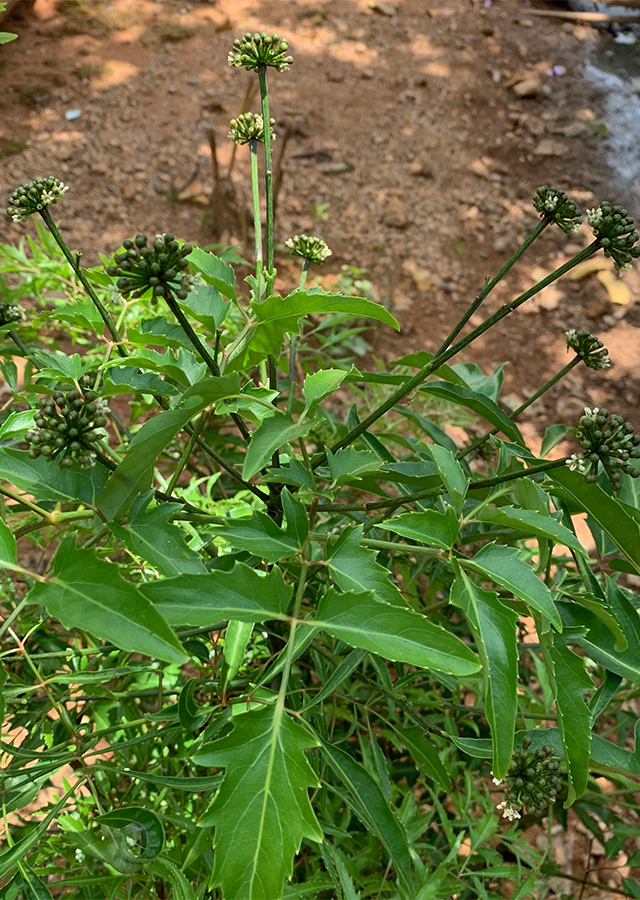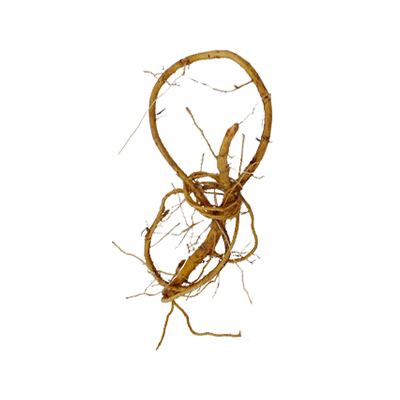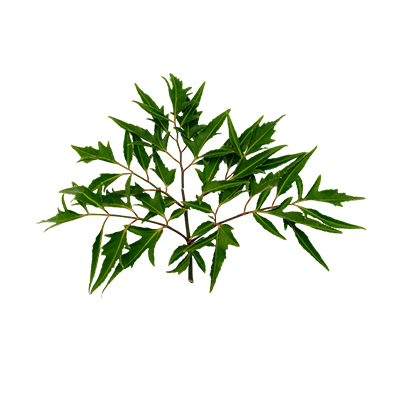Ming Aralia
Polyscias fruticosa (L.) Harms.
Araliaceae
Location in our garden
Principal



Synonym
Aralia fruticosa (L.) L.H.Bailey
Aralia tripinnata Blanco
Nothopanax fruticosus (L.) Miq.
Habitus
Shrubs. An erect evergreen plant with a height of about 5 m.
Part Used
Leaves
Bark
Roots
Growing Requirements
Full Sunshine
Need Shade
Habitat
Terrestrial
Overview
Ming aralia is native to tropical areas from India to Polynesia, but has been introduced into a large number of tropical and subtropical areas around the world. The plant provides edible leaves and also has medicinal uses. It is commonly cultivated, from India to Polynesia, as an ornamental and hedge plant, as well as for culinary use.
Vernacular Names
Toem bo lyam (Cambodian), Nan yang shen (Chinese), Papua (Phillipines), Taiwan momiji (Japanese), Kuku garuda (Malaysia), Cay goi ca (Vietnamese)
Agroecology
Succeeds in the tropics and the subtropics. Prefers a position in bright shade or part sun. Requires a well-drained, acid soil. Plants generally thrive in peaty, sandy, soil-based potting mixes that have excellent drainage, in locations with moderate to high humidity. Avoid both wet and dry soils.
Morphology
- Leaves - decompound, 3-pinnate, and up to30 cm long. The pinnae are 6-10, the upper ones are shorter. Leaflets and ultimate segments are very diverse, mostly lanceolate,5-10 cm long, the terminal segments are usually larger than the others and more of ten-lobed, pointed at the tip, sharply and irregularly toothed.
- Flowers - pale yellow to white flowers, numerous,umbellately arranged, shortly stalked, borne on terminal inflorescences in the upper axils of the leaves, up to 15 cm long.
- Fruits - a drupe, broadly ovoid, compressed, and about 4 cm long.
Cultivation
- The Ming aralia can be propagated through cuttings. Take green-stem cuttings and use a rooting hormone for best success. Plant cuttings in spring, when you can provide them with plenty of warmth and moisture.
- Plants can flower all year round.
Chemical Constituents
Saponin, alkaloid, sterol, polifenol, bergamotene, germacrene-D, gM-bisabolene, glucopyranosyl, polysciosides A-H.
Traditional Medicinal Uses
- The root is used as diuretic.
- Leaves are used as astringent and febrifuge.
- Studies have suggested antipyretic, analgesic, anti-inflammatory,molluscicidal, adaptogenic, antitussive, anti-asthma, diuretic,antiasthmatic, alpha-glucosidase and alpha-amylase inhibitory activities.
- Juice from bark taken for thrush and tongue and throat ulcers. Bark poultice applied to syphilitic sores.
- Leaves are powdered, mixed with salt for wound healing.
- In Cambodia, considered a sudorific inhalant; also used for neuralgia and rheumatic pains.
- In Fiji, the root is used as diuretic.
- In Vietnam, it is used as digestive.
- In India, used as astringent and febrifuge.
Part Used
Reference Sources
- Fern, Ken. (2014). Useful Tropical Plants: Polyscias fruticosa. http://tropical.theferns.info/viewtropical.php?id=Polyscias+fruticosa. 16-01-2021.
- Missouri Botanical Garden. (No date). Polyscias fruticosa. http://www.missouribotanicalgarden.org/PlantFinder/PlantFinderDetails.aspx?kempercode=b635. 16-01-2021.
- Science Direct. (2020). The genus Polyscias (Araliaceae): A phytochemical and biological review. https://www.sciencedirect.com/science/article/abs/pii/S2210803320300488. 16-01-2021.
- Stuart Xchange. (2018). Philippine Medicinal Plants. Papua-Polyscias fruticosa (L.) Harms .http://www.stuartxchange.org/Papua.html. 16-01-2021.
- The Spurce. (No date). How to Grow Ming Aralia. https://www.thespruce.com/grow-polyscias-fruticosa-1902765. 16-01-2021


